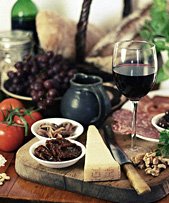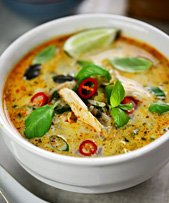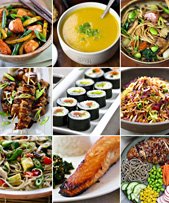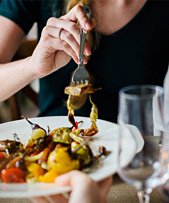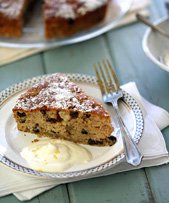Food focus: Garlic

A classic ingredient in traditional Mediterranean and Asian cooking, garlic has long been regarded as one of nature’s most effective cure-alls. As long ago as 3000 BC the Egyptians were worshipping garlic and using it as a medicine (clay models of garlic were found inside Tutankhamen’s tomb). Traditional Chinese medicine used garlic for the treatment of coughs, colds, bronchitis, tuberculosis, diarrhea, and many other infectious diseases. The ancient Greek physician Hippocrates used garlic to treat certain cancers. And it has been used throughout history to treat a host of other ailments including the Plague in Europe and typhus and dysentery during World War I.
Since the 1950s dozens of scientific studies have evaluated the health and healing powers of garlic, and a number of other benefits have been discovered. Donald D. Hensrud, M.D., a nutrition specialist at Mayo Clinic in Minnesota notes that “research is concentrating on several areas where garlic may have positive effects: cardiovascular health, immune function, antimicrobial action and anticancer activity.”
In a recent study of 42,000 women in Iowa, for example, those who ate garlic more than once a week were half as likely to develop colon cancer as non-garlic eaters. Garlic has also been shown to lower LDL (bad) cholesterol and boost good HDL cholesterol, which can decrease the incidence of heart attack and stroke.
So what makes garlic such a powerful superfood? Researchers have found that garlic is full of health-giving compounds including vitamin C, potassium, phosphorus, selenium and a number of amino acids. But one of the most important health-giving compounds found in garlic is allicin, a phytochemical compound which is formed when garlic is cut or crushed (it’s allicin that gives garlic its characteristic flavor and pungent aroma).
Garlic is enjoyed daily throughout the Mediterranean, and is used as a flavor enhancer in pasta dishes, paellas, risottos, pilafs, pizza, stews, soups, salad dressings and sauces. Garlic is an equally essential ingredient in Asian cooking. “The pungent flavor of garlic is part of the fabric of Chinese cuisine,” points out renowned Chinese-American cook and author Ken Hom. “It would be inconceivable to cook without its distinctive, highly aromatic smell and unique taste.”
Here are 16 Mediterranean and Asian recipes that include garlic as an essential ingredient:
Roasted
tomato and garlic sauce
Spinach
and feta stuffed mushrooms
Patatas bravas
Shrimp,
kale and cashew stir-fry
Marinated
Mediterranean olives
Tzatziki
Hummus
Pesto
Pumpkin,
spinach, pine nut and Parmesan pasta
Thai fish
cakes with sweet chili-lime dipping sauce
Mushroom ragu
with penne
Spanish
braised chickpeas with tuna and olives
Sicilian
fish stew
Greek
tuna and vegetable stew
Champiñones
al ajillo
Tandoori
salmon skewers

